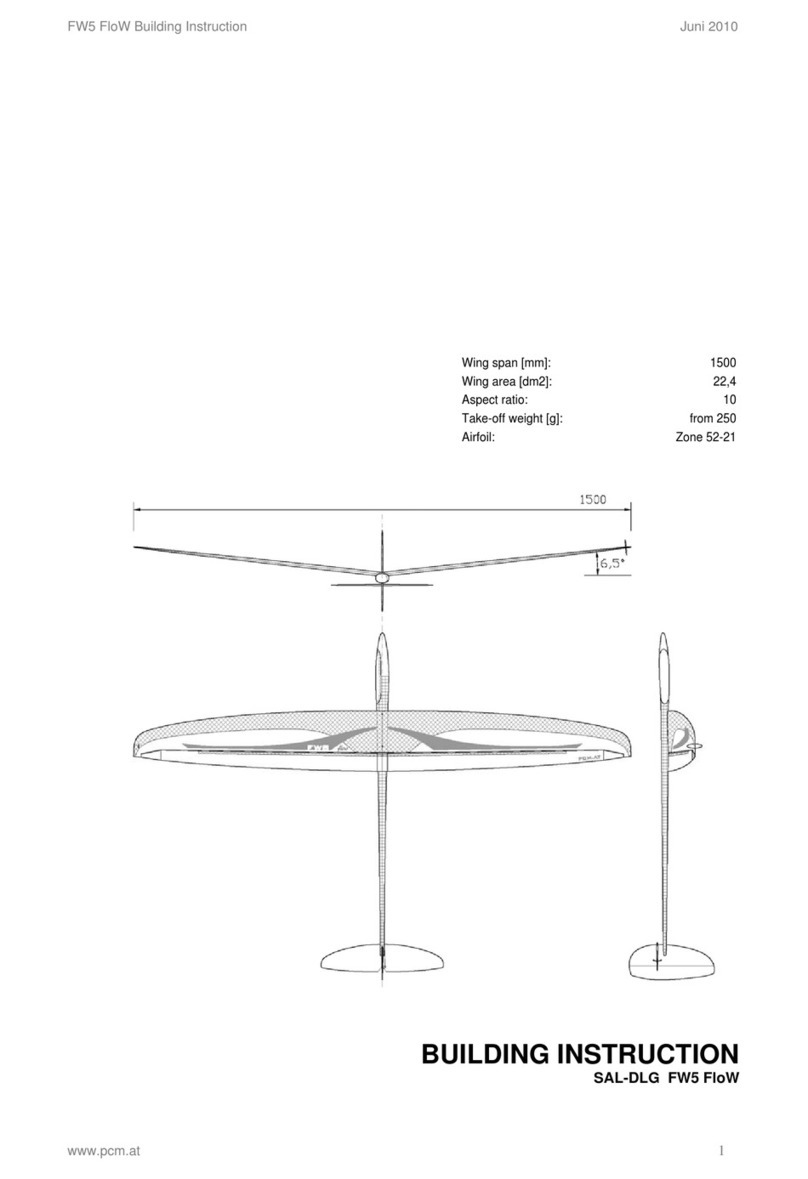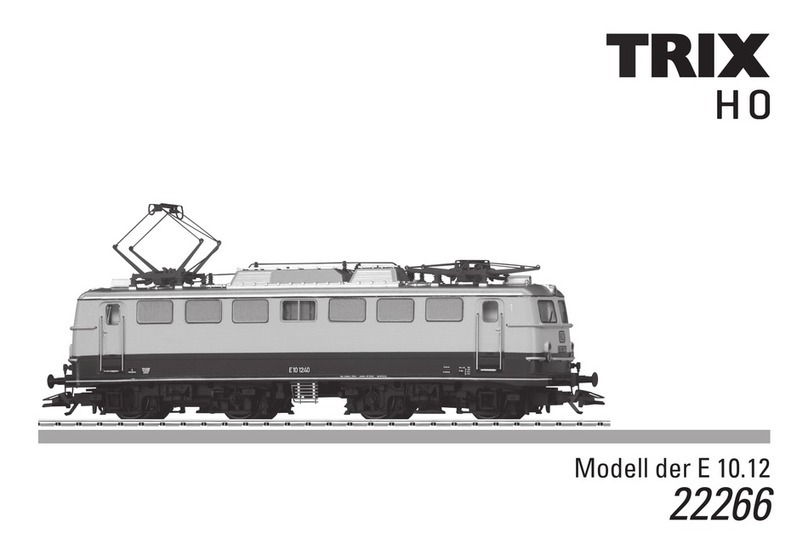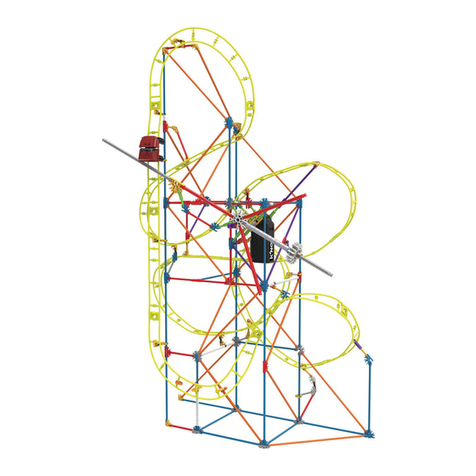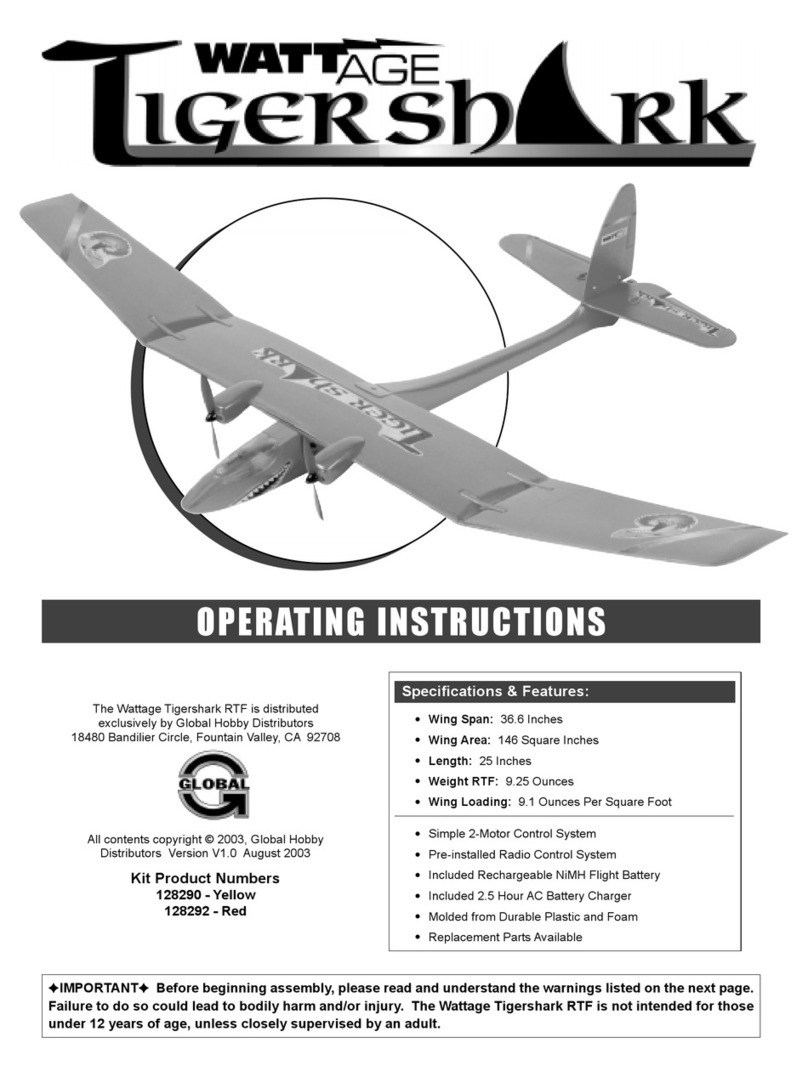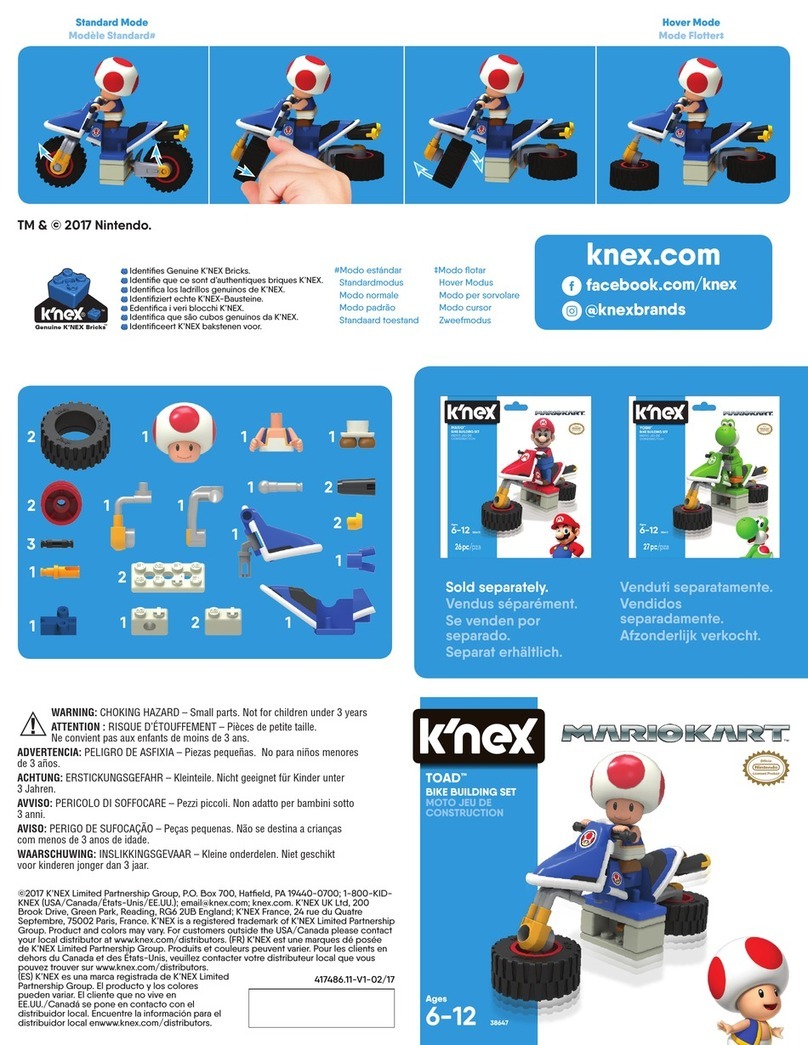PCM ERWIN XL slope User manual

Erwin XL slope building Instruction August 2018
www.pcm.at 1
Wing span [mm]:
3000
Aspect ratio:
14,67
Wing area [dm2]:
61,33
Wing loading:
49-70
Weight [g]:
3000-4500
Airfoil:
VS1
BUILDING INSTRUCTION
ERWIN XL slope

Erwin XL slope building Instruction August 2018
www.pcm.at 2
CONTENTS
DATA
1. Kit –Contents
2. What else do you need?
3. Electronic equipment
4. Settings for the first flight
ASSEMBLING THE MODEL
5. V-tail
6. Gluing of fuselage
7. Electronic components in fuselage
8. Wing
9. Installation of antenna
BEFORE THE FIRST FLIGHT
10. Ballast system
11. Fixing of the wing
12. Check list before starting
13. Attention, Erwin XL is sensitive to the sun
3
3
4
5
6
7
8
9
11
12
13
13
13

Erwin XL slope building Instruction August 2018
www.pcm.at 3
DATA
1. Kit –Contents
Fuselage, in two parts, incl. canopy and cover for end of fuselage
Wing, in two parts
V-Tail
Covers for servos on wing, 4 pieces
Levers for rudders, 4 pieces
Servo board
Assembly board for hook for winch start
Ball connectors for the elevator, 2 pieces
Brass pipes for the elevator, 2 pieces
Pipes and push rod, 2 pieces each
Threaded coupler, 2 pieces
Plugs and frames for connection of wing and fuselage, 4 pieces each
Screws, 2 pieces, for fixing the V-tail
Connectros / ballast (more ballast available on demand):
Segler / Glider
Elektro
Normal (Slope)
2x Kohlestab / carbon rod
2x Stahl kurz / steel short
1x Stahl lang / steel long (auf Anfrage / on demand)
2x Kohlestab / carbon rod
Medium
1x Kohlestab / carbon rod
2x Stahl kurz / steel short
1x Kohlestab / carbon rod
1x Stahl kurz / steel short
Ultralight
1x Kohlerohr / carbon pipe
1x Kohlerohr + Stahl innen /carbon pipe + steel core
1x Stahl kurz / steel short
1x Kohlerohr / carbon pipe
Building instruction (please download from our homepage)
2. What else do you need:
Controls of the wing:
Connectors for push rods, M2,5mm, 8 pieces
Welding rod, d=2mm
Steel wire 1,5mm, 0,8mm
Hook for winch start and nut
On-off switch / socket for loading
Cables (electricity)
Cable for antenna, possibly steel wire for extension of
antenna
Plugs
Epoxy-glue (for example UHU 300 endfest or Stabilit, no
fast hardening epoxy resin)
Cotton flocks to thicken glue
Hook for winch start
Connector for push rods, M2,5mm

Erwin XL slope building Instruction August 2018
www.pcm.at 4
3. Electronical equipment
Servos for the wing
Futaba
S3150
Graupner
DES 448
Servos for the V-tail
Graupner
C261 (these servos will fit into the gap of the servo board)
DES 281
C2081
Hitec
HS65HB or MG
Robbe
S3107 (weak)
Receiver:
2,4GHz:
all (lead antennas outside the fuselage)
35 MHz:
Graupner DS19
Simprop Scan 7
Accumulator:
Eneloop 2000 mA/h

Erwin XL slope building Instruction August 2018
www.pcm.at 5
4. Settings for the first flight
(measure from the leading edge of the wing to the back)
Centre of gravity: weak conditions: 88-94mm (f.e. plain, soft wind on slope)
strong wind on slope: up to 110mm possible
Hook for winch start: 10-20mm before centre of gravity (start with 20mm)
Difference in angle of attack: +1°
Ailerons und flaps (soft)
(measure between aileron and flap and on deepest point of the elevator)
Ailerons und flaps (strong / dual rate)
(measure between aileron and flap and on deepest point of the elevator)
Butterfly (landing position)
(measure between aileron and flap and on deepest point of the elevator)
Flaps positive
(measure between aileron and flap and on deepest point of the elevator)
Flaps negative
(measure between aileron and flap and on deepest point of the elevator)

Erwin XL slope building Instruction August 2018
www.pcm.at 6
ASSEMBLING THE MODEL
5. V-tail
The v-tail is ready prepared with holes for screws to be
fixed on the fuselage.
Controlling of the elevator:
Bend two brass levers as shown below and glue the ball
connectors to one end each. Then glue the levers to the
control surfaces of the elevator. The gluing spot should
be as near as possible to the turning axis of the controls
(silicone hinge).
Ready mounted levers with ball connectors.
(Here to be seen on Erwin XL ultralight)

Erwin XL slope building Instruction August 2018
www.pcm.at 7
6. Gluing the fuselage
Check the alignment of the V-tail regarding the axis of the
fuselage, so that it is fixed symmetrically.
To do this, mount v-tail and wing on the fuselage. Look at
Erwin XL from the front and slowly lower the tail, until the
ends of the elevator disappear behind the wing.
If both ends of the elevator disappear at the same time,
the v-tail is aligned correctly.
If the v-tail isn’t aligned correctly, chamfer the edges of
the fitting. Put the two parts of the fuselage together again
and turn one part until the v-tail is mounted symmetrically.
Furthermore, check, if the difference in angle of attack of
+1° can be set without problems.
For this, put the 2 parts together and place the fuselage on a flat surface. The distance between
fuselage and surface should be 7mm at the joining spot. You can f.e. check this with a small
piece of wood, which you place under the fuselage.
If you can’t assemble the 2 parts of the fuselage in this position, grind at the fitting.
Then glue the parts together. Use epoxy-glue and some cotton flocks to thicken the glue.

Erwin XL slope building Instruction August 2018
www.pcm.at 8
7. Electronic components inside the fuselage
First of all, thread a steel wire of 1,5 mm into the outer
tubes of the push rods. By this, they get a lot stiffer and
you can thread them into the fuselage easily. Once the
tubes are inside the fuselage, you can bring them to the
right position from outside by using magnets.
(On photo white outer tubes were used.)
You can fix the tubes easiest by applying runny super
glue (with very thin viscosity) on both ends of the tubes
and letting it run along the tubes.
If you prefer to glue the tubes with 5 minute epoxy (mixed
with cotton flocks), you must apply the glue before you
thread the tubes into the fuselage. Put glue app. every
25cm.
In both cases, the ends should not be glued to keep
them still mobile. Therefore, place the final sticking point
about 10 to 12 cm from the ends of the tubes.
The servos for the elevator are mounted on the servo
board. The wholes are prepared for Graupner servos
C261.
Glue the servo board into the fuselage as shown on the
photo. Grind the gluing areas thoroughly and glue with
“UHU endfest 300” (epoxy 2 component glue) thickened
with cotton flocks.
Then, thread the thin pipes into the tubes, which act as
pushrods for controlling the elevator.
To stiffen the push rods, thread a 0,8mm steel wire
inside. We recommend this especially at the ends, where
the push rods are not led inside the outer tubes anymore.
Glue the threaded couplers to the ends of the pushrods.
These couplers are turned into the plastic part of the ball
connector.
Here you can adjust later the length of the pushrods.

Erwin XL slope building Instruction August 2018
www.pcm.at 9
We use a very simple solution to mount the canopy.
Just glue the carbon stick into the canopy.
8. Wing
The openings for the servos are big enough for all
appropriate standard servos including mounting frame,
such as Futaba S3150.
Lead the cable through the wing as shown below.
The connection to the levers on the rudder goes crosswise
through the wing.
Before you glue the levers into flaps and ailerons, grind
the gluing spots on the control surfaces and on the
levers.
Aileron Flap

Erwin XL slope building Instruction August 2018
www.pcm.at 10
For gluing the lever use epoxy-glue with cotton flocks.
When fitting the lever in the correct position, notice that the
hole in the lever should be situated vertically above the
hinge line.
To connect the servos to the levers use two connectors
M2,5mm. In between, use a welding rod (diameter 2mm),
which you solder inside the both connectors.
To find the right length of the welding rod put all servos in
0-position. If the length isn’t exact after soldering, you can
heat the soldered point with the soldering iron until the
the wire can be moved to the correct position.
The root ribs have recesses for the plugs between
fuselage and wings for easy electrical connection.
Fix the covers of the servos with a double-sided adhesive.
In order to move the triangular ends of the ailerons,
connect the two control surfaces with an adhesive tape.

Erwin XL slope building Instruction August 2018
www.pcm.at 11
9. Installation of antenna
If you want to install 2,4 Ghz, let the antennas stand out
of the carbon fuselage as shown on the photo of Elvira.
The angle between the antennas should be 90°.
35 / 40 MHz:
As Erwin XL slope is completely made of carbon, a part
of the antenna must be situated outside the model.
One possiblity is to „extend“ the fuselage at the rear end
with a steel wire of about 450mm. Fix the end of the
antenna to this steel wire.
Another solution is to fix the antenna to the end of the
elevator. Lead the antenna inside the fuse behind the wing
and then leave the fuselage. You should add the length
between receiver and the breakthrough of the fuselage to
the end of the antenna, so that the original length of the
antenna is completely outside the fuselage.
Always test the reception on ground before you fly!

Erwin XL slope building Instruction August 2018
www.pcm.at 12
BEFORE THE FIRST FLIGHT
10. Ballast system
You can easily change the weight by varying between the different connectors.
You should always use two connectors when flying Erwin XL slope.
If the glider accelerates too slowly, don’t hesitate to add further weight. Erwin XL slope can do well
with more weight, in the air as well as when landing.
(Photos made from an older version of the root rib.)
2x carbon short, 150g
1x carbon short, 1x steel short, 450g
1x steel short, 1x steel long, 1125g
2x steel long, 1500g
(Order an additional steel bar if you need it)

Erwin XL slope building Instruction August 2018
www.pcm.at 13
11. Fixing of the wing
When attaching the wings, make sure that the connector
will not be postponed again.
First, push the connector into the first wing half as far
as possible. Note, that the shorter part of the connector
should disappear inside the wing. Then, push the
fuselage onto the connector and finally the 2nd wing
half.
Close the gap between wings and fuselage with adhesive
tape. By this way, the wing halves are fixed to the
fuselage.
12. Check list before starting:
1. Check centre of gravity (the angle of attack is pre-set)
2. Check rudders:
Do rudders move in the correct direction?
Check the greatest swings of the rudders
All control surfaces are continuously connected to the wing along the hinge line.
3. Check reception:
Leave the antenna inside the radio control and go away from the glider up to a distance of
about 60m. The rudders should not tremble.
2,4 Ghz: depending on radio controller (f.e. reduce transmission power)
13. Attention, Erwin XL is sensitive to heat!
Pay attention, that Erwin XL does not heat up! That means,
- don’t let the model lie in the car, when the sun is heating up the car.
- don’t let the model lie in the sun too long. Protect wing and elevator with bags, if you don’t fly.
- Avoid all other possibilities to heat up Erwin XL.
The model is heated up to 50° during production, but in the sun the model can easily reach higher
temperatures. During flight the model is sufficiently cooled by the airstream.
This sensitiveness is high shortly after production / purchase and will get less gradually.
Other manuals for ERWIN XL slope
1
Table of contents
Other PCM Toy manuals
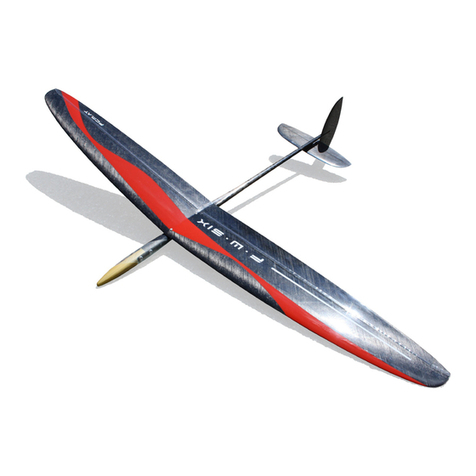
PCM
PCM FW6 Instruction Manual
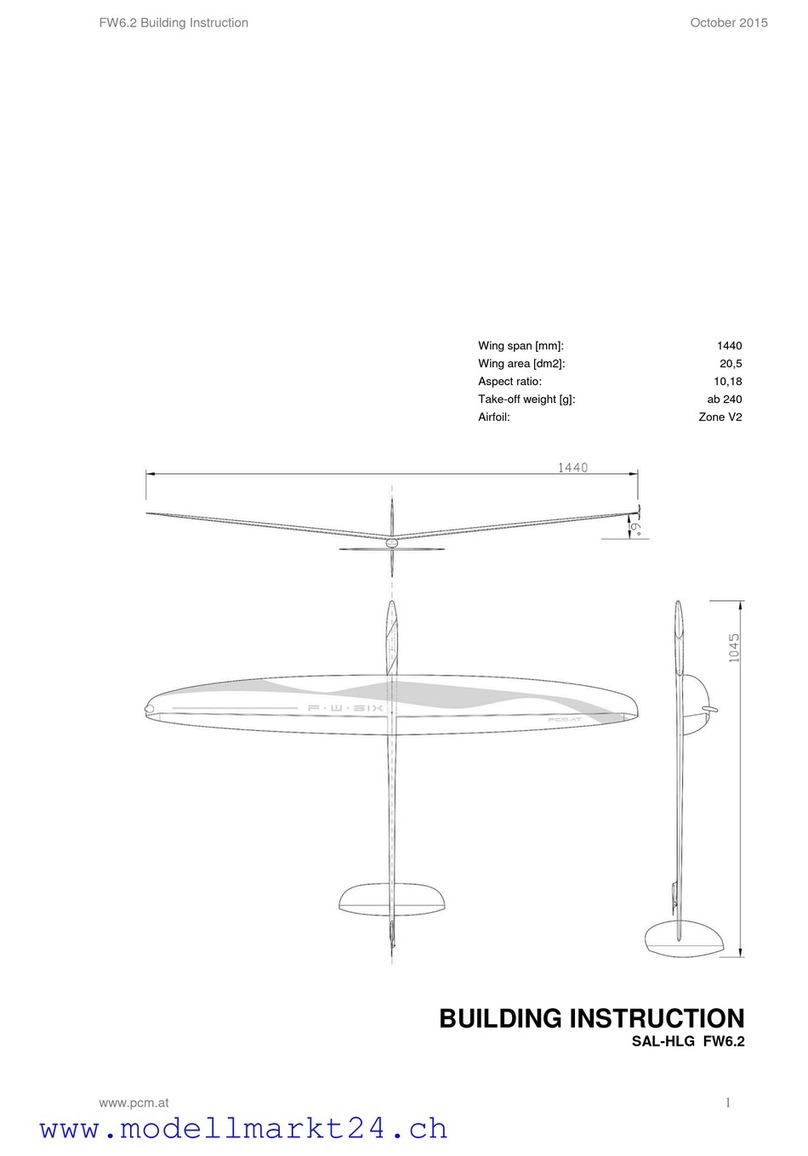
PCM
PCM FW6.2 User manual
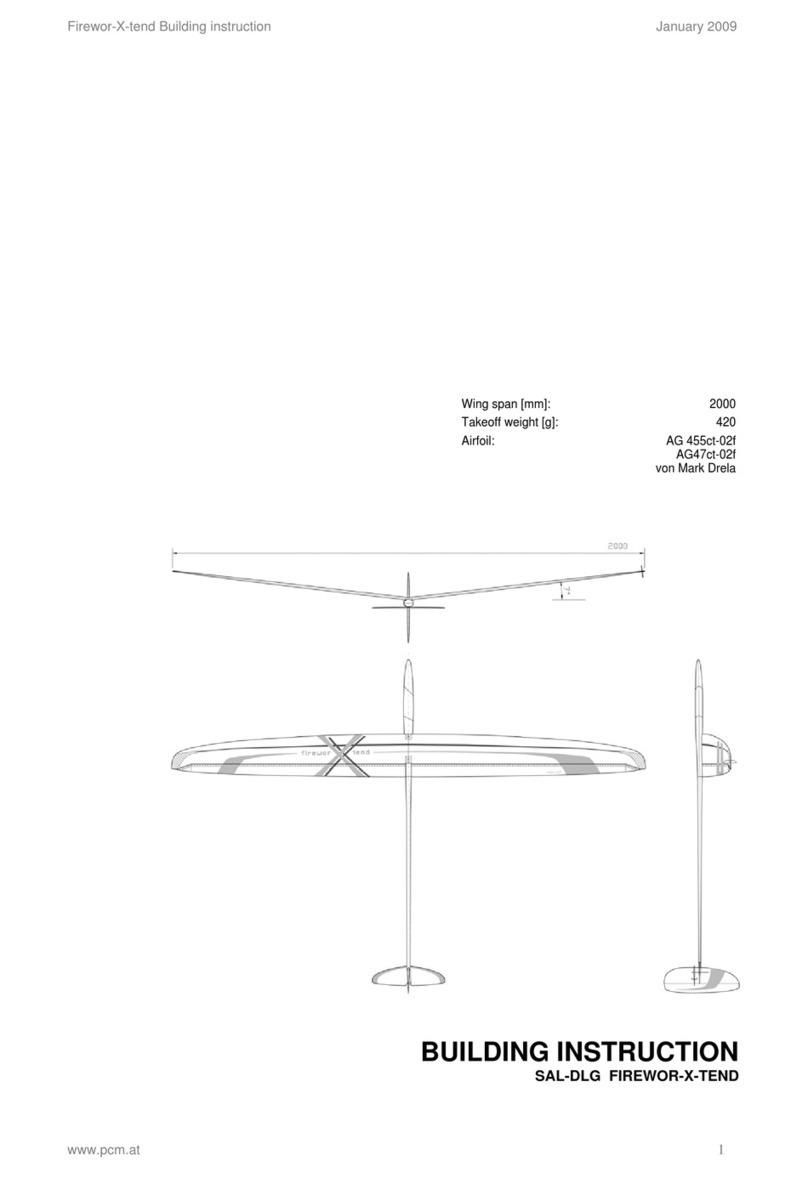
PCM
PCM SAL-DLG FIREWOR-X-TEND Instruction Manual

PCM
PCM ELVIRA User manual

PCM
PCM Erwin XL Ultralight Electro User manual

PCM
PCM GLIDER MINI-RACE User manual
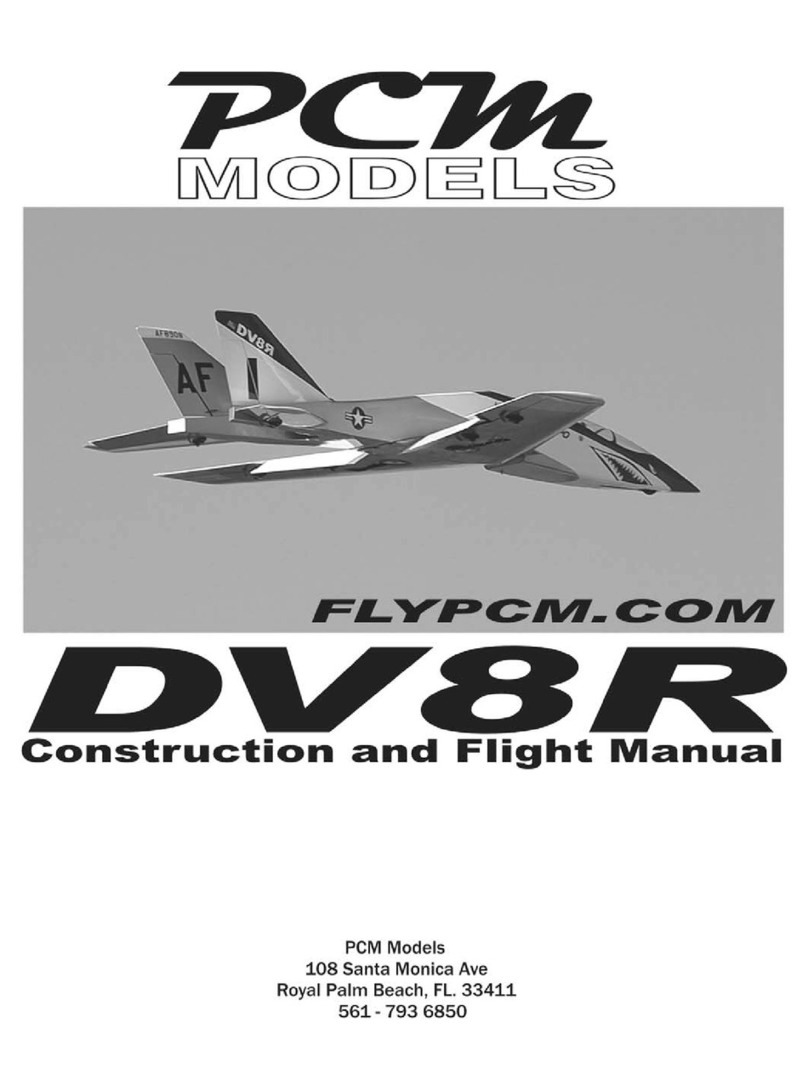
PCM
PCM DV8R Technical specifications
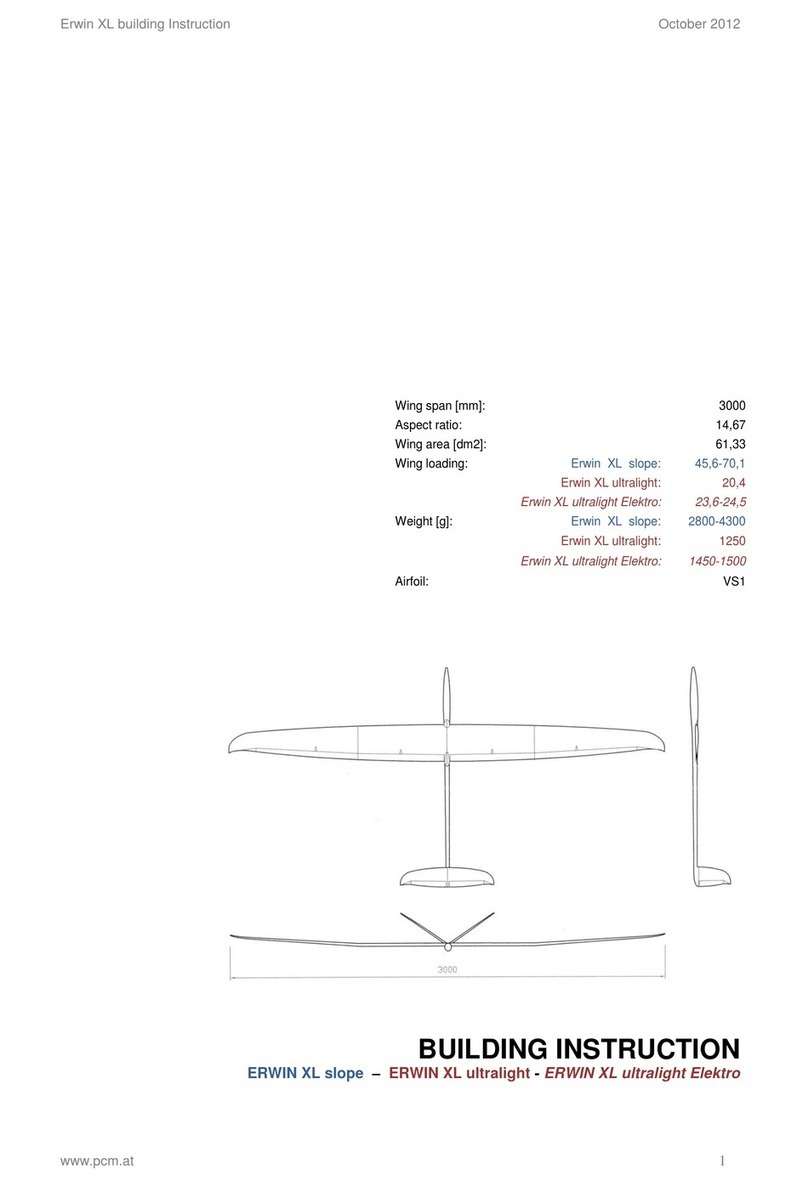
PCM
PCM ERWIN XL slope User manual
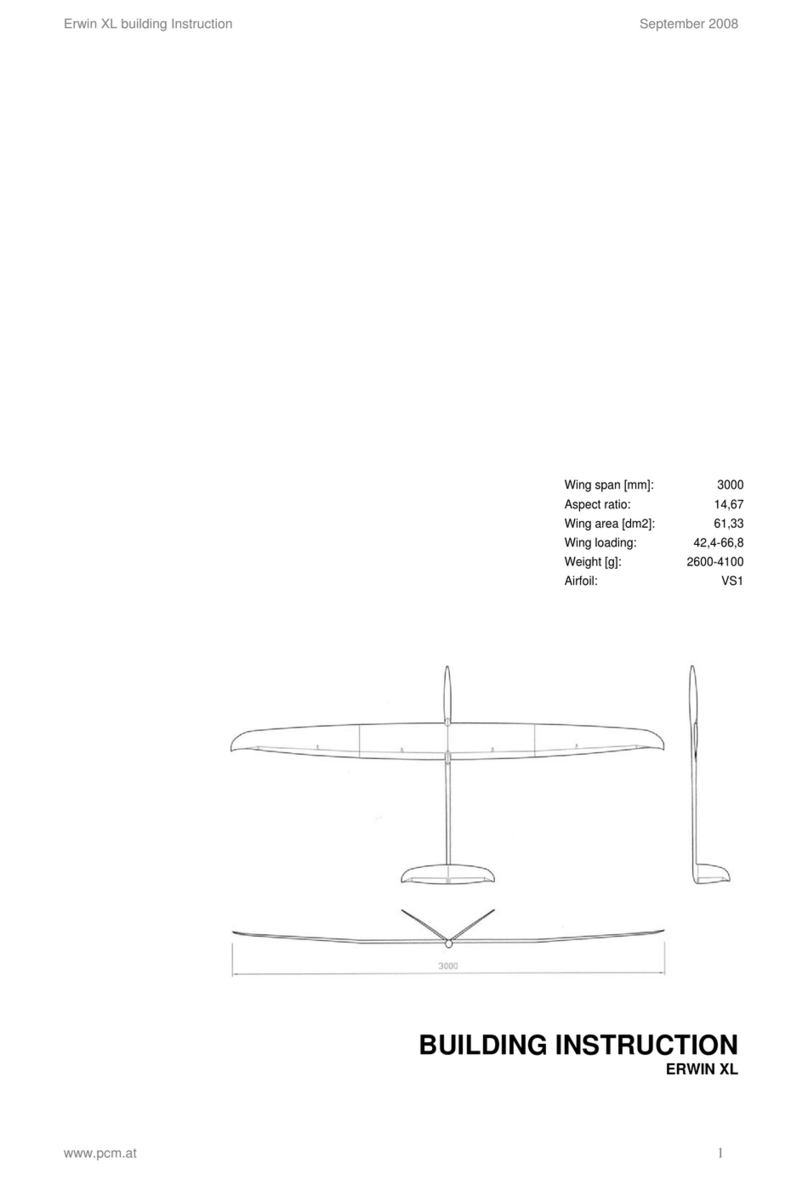
PCM
PCM Erwin XL User manual
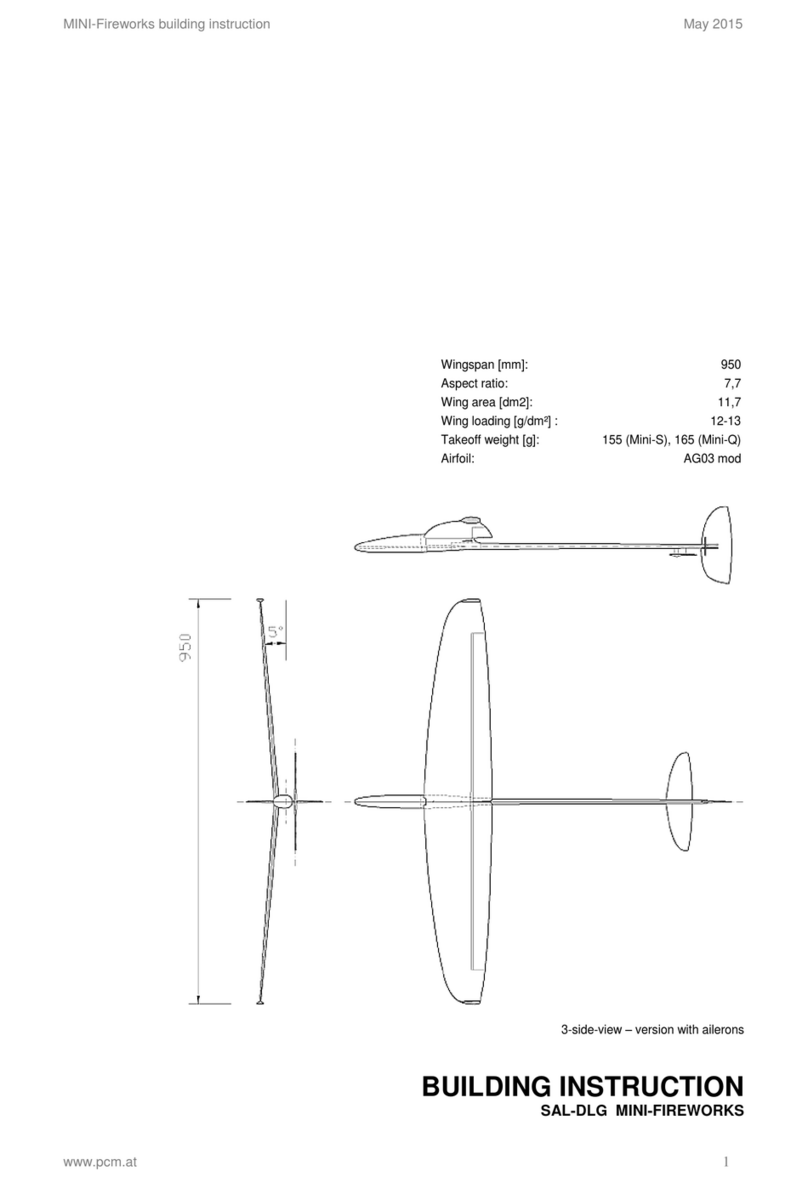
PCM
PCM MINI-S Instruction Manual
Popular Toy manuals by other brands

Dancing Wings Hobby
Dancing Wings Hobby T09 AeroMax instruction manual

Hasbro
Hasbro TIGER ELECTRONICS FurReal friends Guinea Pig instruction manual

Pro Boat
Pro Boat Formula owner's manual

V-tech
V-tech DigiArt Spirals & Sounds Parents' guide
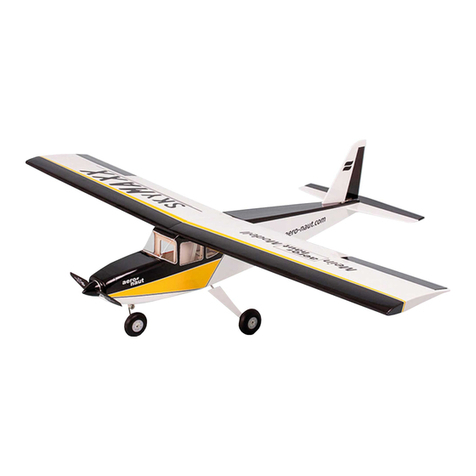
Aeronaut
Aeronaut SkyMAXX instructions
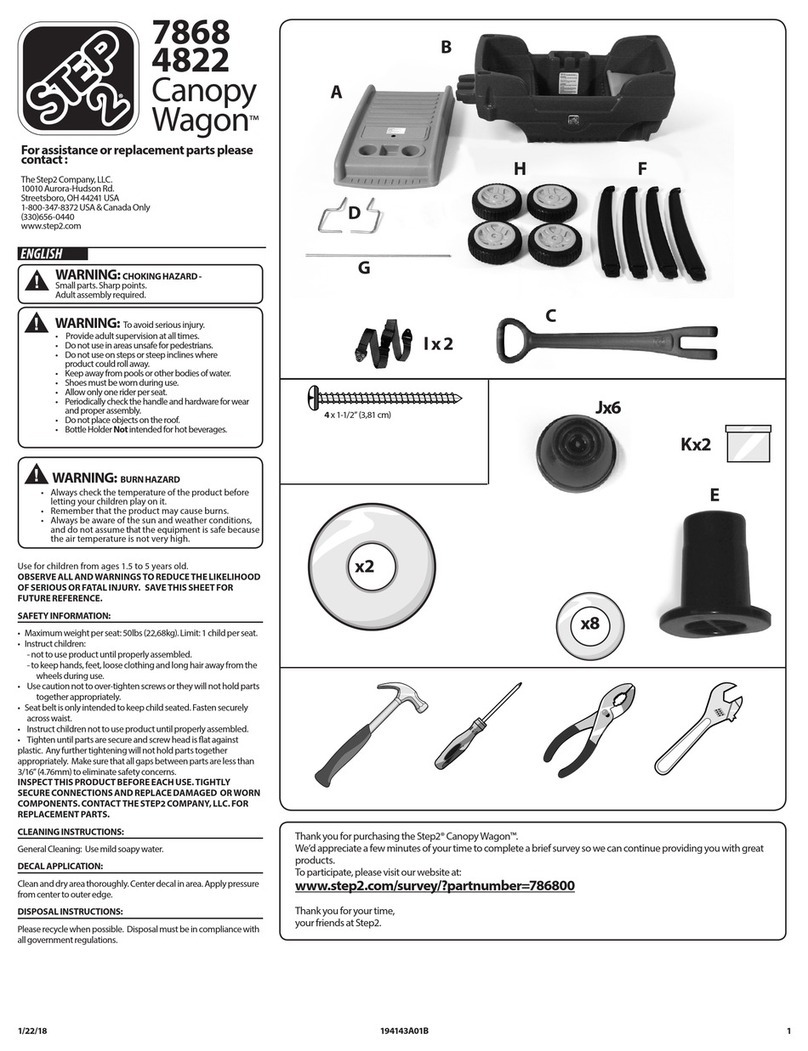
Step 2
Step 2 Canopy Wagon 7868 manual
